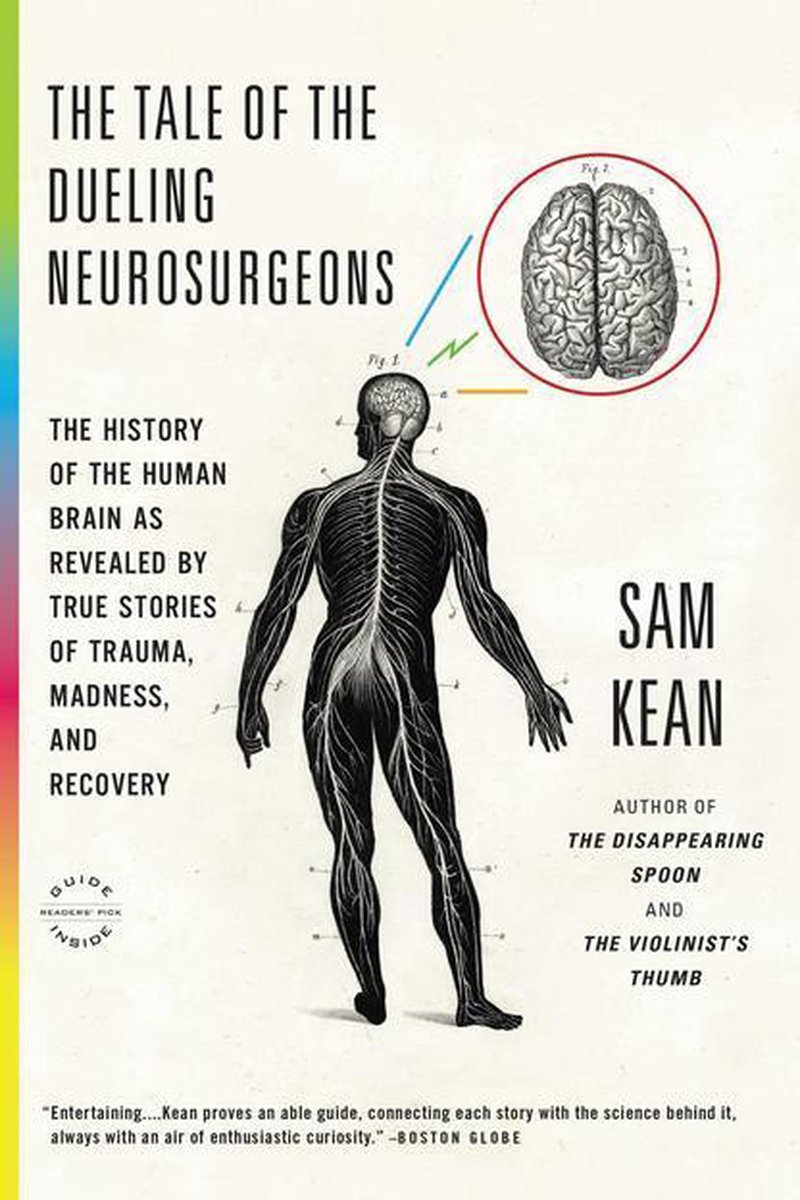

If that concerns you, read Kean's The Disappearing Spoon 2 first. Although writing on a scientific topic, Kean writes for a general audience, provides ample explanation and sprinkles humour generously throughout.Īs a point of clarification, Chem 13 News magazine is primarily for chemistry teachers and The Tale of the Duelling Neurosurgeons is not an obvious fit. Kean has an engaging, engrossing, entertaining and subtly witty writing style that make his books very easy to read and understand, even if the content is not simple.

The Tale of the Duelling Neurosurgeons is Sam Kean's third book and again, he does not disappoint. The human brain is made up of three parts: the lower brain, the middle brain and the cortex.The Tale of the Duelling Neurosurgeons - The History of the Human Brain as Revealed by True Stories of Trauma, Madness and Recovery by Sam Kean, 2014, 407 pages, hardcover, ISBN 978-4-8 We owe much of our knowledge about the human brain to unfortunate individuals like King Henri, and the brilliant scientists who studied their brains after their deaths. This enabled them to uncover the cause of his hallucinations: the king’s skull was intact but the injury had caused swelling and tissue decay at the back of his brain.Īndreas and Vesalius’s findings helped establish the credibility of autopsies as a means of scientific research. He was bedridden for weeks, experiencing hallucinations and painful headaches until he died.Īfter the king died, a surgeon named Ambroise Parè and an anatomist named Andreas Vesalius conducted an autopsy on his head – a highly contentious move at the time. Henri had suffered a severe blow to the forehead during a joust. It showed that post-mortem examinations could provide us with deeper insight into the inner workings of the brain.

The famous 1559 autopsy of King Henri II of France was the first breakthrough in this field. Autopsies often revealed damage to specific brain regions, so researchers could ascertain what activities those regions were responsible for, based on the person’s unusual behavior. Woodrow Wilson, for example, lost the ability to notice things to his left after he suffered a stroke in 1919.Įarly neuroscientists often conducted their research by performing autopsies on people with brain damage after they died. People with brain disorders often perceive the world oddly or behave in unusual ways.

That’s why the pioneers of neuroscience learned about the brain mostly by studying individuals with brain damage. Throughout most of our history, scientists couldn’t see what was happening in people’s heads without drilling a hole into their skulls.


 0 kommentar(er)
0 kommentar(er)
